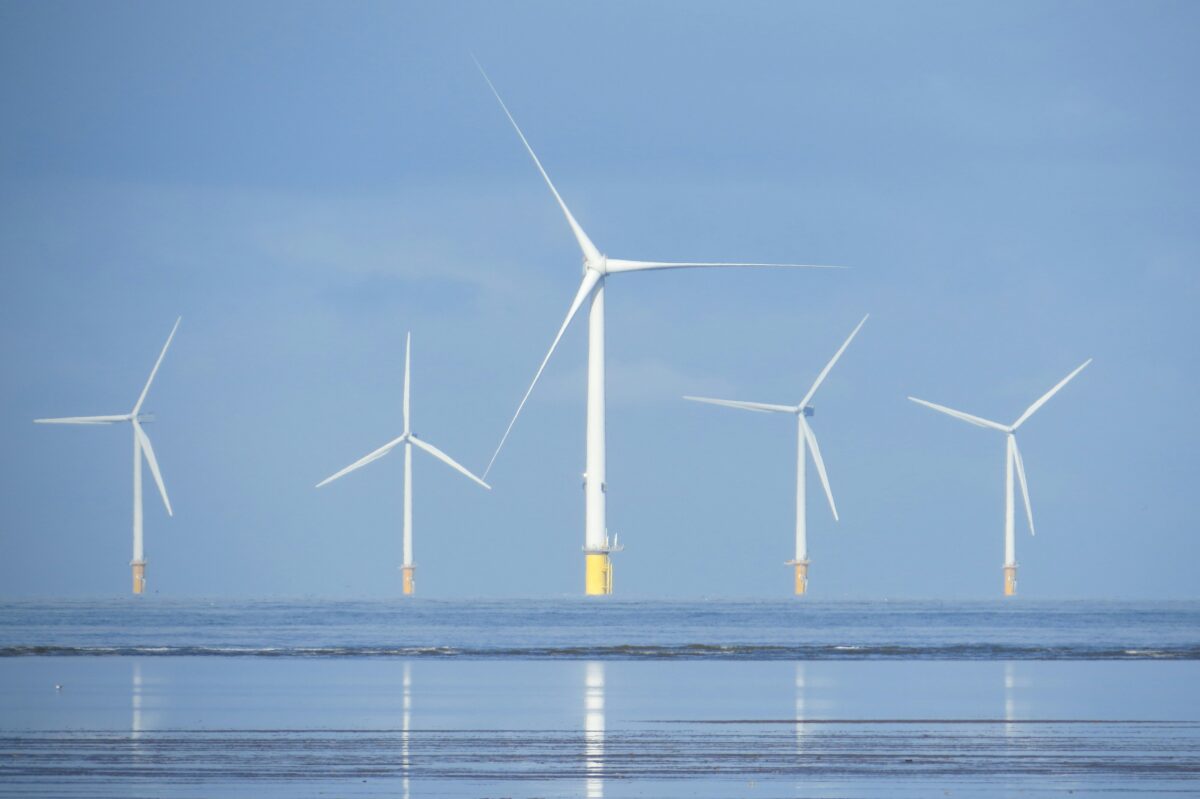On his first day in office, President Trump signed an executive order titled “Terminating the Green New Deal” which halted all disbursements of federal funding for the Inflation Reduction Act (IRA) and the Bipartisan Infrastructure Law (BIL). Part of a larger order to “[Unleash] American Energy,” Trump’s funding pause took aim at the landmark package of climate legislation which was a major achievement for the Biden administration. Passed in 2022 by a slim Congressional majority, the IRA and BIL offered grants and loans to local governments, utilities, and community organizations to advance clean energy across the country. While some money had already found its way to funding recipients by the start of Trump’s tenure in January, billions of dollars had yet to be disbursed and were locked up by the executive order.
In the months since, states and funding recipients have taken the administration to court, allowing some funds to be discharged. One such success was the release of $3.2 billion in funding from the IRA’s New ERA — or Empowering Rural America — program for clean energy in Colorado. The decision came with the announcement that the six electric cooperatives and the Tri-State Generation Transmission Association, who had submitted plans to use the funds for clean energy development, had the option to “propose project revisions” to “remove harmful DEIA and far-left climate features.” Funding awardees have thirty days to propose changes, but early signs indicate a commitment to using the money for clean energy, as it was intended.
CORE Electric Cooperative, which serves almost 400,000 residents in 11 counties across Colorado, was awarded $225 million of New ERA funds to implement power purchase agreements for 550 megawatts of wind, solar, and battery capacity. CORE CEO, Pam Feuerstein, told the Denver Gazette, “New ERA funding is an integral part of CORE’s broader strategy to ensure reliable and safe power and maintain stable rates for our members, while in alignment with Colorado’s greenhouse gas reduction objectives.” While the Cooperative has yet to announce whether it will move forward with the plan as originally proposed, Feuerstein’s statement appears promising.
Colorado has some of the strongest state climate policies in the country, with greenhouse gas reduction targets mandating a 50 percent decline in emissions by 2030, relative to 2005 levels, and net-zero emissions by 2050. In his State of the State address in March, Colorado Governor Jared Polis said that “Colorado will continue to lead the way to tackle climate change and pollution, with or without federal help.” Governor Polis’s sentiment has been echoed by Democratic governors across the country, who have been regulating climate and clean energy since before the first Trump administration.
Yet, the energy transition is not limited to blue states. In fact, 64 percent of renewable energy growth since 2010 has occurred in red states. Oklahoma, for example, has seen a massive transformation of the electric grid. In 2001, 63 percent of electricity was produced from coal-fired power plants; by 2023, coal represented just 6 percent of electricity output, while 45 percent of the grid was powered by wind. A substantial decline in the cost of renewables, along with benefits to energy security and green job growth, has made clean energy economically advantageous for utilities and consumers alike. Onshore wind has been cheaper than fossil fuels since 2013 and the cost of solar PV technology has dropped by 88 percent since 2010.
Fueled by declining costs and state and federal policies, the market has begun to favor clean energy over traditional fossil fuel sources. In 2024, total clean energy investment in the US totaled $272 billion, up 16 percent from 2023. While development of onshore wind has slowed from its previous record-breaking rates of expansion due to supply chain, finance, and permitting issues, other renewable forms have seen greater interest. An estimated 39.6 gigawatts of solar was added to the American grid last year. Battery storage, considered essential to solving the intermittency challenge of solar and wind, reached 29 gigawatts of capacity nationwide and is expected to grow almost 50 percent this year. In total, clean energy will make up an estimated 93 percent of all new power plant construction in 2025, flooding the grid with clean power at a time when electricity demand continues to rise.
The rapid construction of data centers to power AI models is expected to add 44 gigawatts of energy demand to the American grid in the next five years. The grid is already experiencing a transmission crisis, with renewable power making up the vast majority of projects waiting in the interconnection queue. President Trump’s slew of executive orders is likely to slow much-needed transmission reform. The administration’s actions have exacerbated other challenges, including permitting, going so far as to end lease sales for offshore wind projects. Given these issues and the tremendous uncertainty of federal funding, the future of renewable energy is certainly on the rocks. These barriers, however, are not unsurmountable. Texas, for example, has managed to sidestep interconnection and permitting challenges due to a deregulated electric grid. The state has become the number one producer of energy from solar, wind, and battery storage, surpassing even climate-forward California.
State policies and market trends will continue to encourage renewable expansion nationwide. While President Trump may continue his calls to “drill, baby, drill,” clean energy is here to stay. The next four years will be the ultimate test of how well federal energy does in the absence of federal political support. The passage of the IRA and the BIL during the Biden administration tipped the scales in favor of a clean energy economy, signaling to states, utilities, and consumers that a renewable future is not only possible, but inevitable. We already are “Unleashing American Energy,” but not by burning fossil fuels. The American energy future is clean, green, and just beginning to take off.
Sources:
Alliance Governors Vow to Continue Climate Fight in State of the State, Inaugural Addresses – “We Are Truly Masters of Our Own Destiny” | U.S. Climate Alliance. (2025, April 4). U.S. Climate Alliance. https://usclimatealliance.org/press-releases/alliance-governors-continue-climate-fight-mar-2025/
Bird, L., Light, A., & Goldsmith, I. (2024). State of the US Clean Energy Transition: Recent Progress, and What Comes Next. World Resources Institute. https://www.wri.org/insights/clean-energy-progress-united-states
Clean Investment Monitor: Q4 2024 Update. (2024). Cleaninvestmentmonitor.org. https://www.cleaninvestmentmonitor.org/reports/clean-investment-monitor-q4-2024-update
Colorado. (2025). Climatepolicydashboard.org. https://www.climatepolicydashboard.org/states/colorado?area
Jaffe, M. (2025, April 2). Trump administration releases $3.2B in federal funds for Colorado’s electric co-ops. There may be a catch. The Colorado Sun. https://coloradosun.com/2025/04/02/electric-coop-clean-energy-grants-new-era-colorado/
Lubber, M. (2025, March 31). Evidence Points To Business And Clean Energy Investments Powering Economic Momentum In 2025. Forbes. https://www.forbes.com/sites/mindylubber/2025/03/31/evidence-points-to-business-and-clean-energy-investments-powering-economic-momentum-in-2025/
Magill, K. (2025, January 24). Trump freezes Inflation Reduction Act funding. ESG Dive. https://www.esgdive.com/news/president-trump-inflation-reduction-act-executive-order-ev-mandate/738197/
Motyka, M., Thomson, J., Hardin, K., & Amon, C. (2024, December 9). 2024 renewable energy industry outlook. Deloitte Insights. https://www2.deloitte.com/us/en/insights/industry/renewable-energy/renewable-energy-industry-outlook.html
Weiser, S. (2025, March 28). Colorado power producers revising project plans. Denver Gazette. https://denvergazette.com/news/500-million-for-colorado-rural-power-producers-released/article_9ef8e588-5b75-406c-87dc-c557aa54acf5.html

